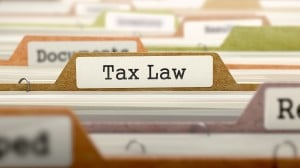IRS Plans To Ditch The Use Of Paper By 2026
The IRS estimates more than 94% of individual taxpayers will no longer ever need to send mail to them.
 Last week, the IRS announced a new paperless processing initiative with the goal of improving customer service. Over the next two years, the IRS will implement systems that will allow taxpayers to submit and file various forms and other correspondence online, including the ability to use mobile-friendly devices such as smartphones and tablets. The IRS will also implement procedures that will allow them to digitally process all correspondence. This initiative will be funded by the Inflation Reduction Act passed earlier this year.
Last week, the IRS announced a new paperless processing initiative with the goal of improving customer service. Over the next two years, the IRS will implement systems that will allow taxpayers to submit and file various forms and other correspondence online, including the ability to use mobile-friendly devices such as smartphones and tablets. The IRS will also implement procedures that will allow them to digitally process all correspondence. This initiative will be funded by the Inflation Reduction Act passed earlier this year.
The IRS stated that paper-based processes have long hampered the IRS and taxpayers. For decades, taxpayers had to respond to notices for things like document verification through the mail, and IRS employees had to manually enter numbers from paper returns into computers one digit at a time, creating significant delays for taxpayers and challenges for IRS staff. Each year, the IRS receives about 76 million paper tax returns and forms, and 125 million pieces of correspondence, notice responses, and nontax forms.
Also, the COVID-19 pandemic and resulting shutdown has resulted in a massive backlog of processing paper documents, including tax returns. As a result, refunds have been delayed as paper returns can take at least six to eight weeks to process.

How Transactional Lawyers Can Better Serve (And Maintain) Their Clients
Starting in 2024, taxpayers will be able to digitally submit all correspondence to the IRS. The IRS estimates more than 94% of individual taxpayers will no longer ever need to send mail to the IRS. Taxpayers use nontax forms to request or submit information on a range of topics, including identity theft and proof that they are eligible for key credits and deductions to help low-income households. Achieving this milestone will enable up to 125 million paper documents to be submitted digitally per year.
In addition, taxpayers will be able to e-file 20 additional tax forms. For businesses with employees, they will be able to e-file employment tax returns also known as Form 941s. This will be welcome news as many businesses will be submitting original or amended 941s in order to claim the Employment Retention Credit. However, it is unclear whether taxpayers can e-file these returns on their own directly to the IRS or through a third party or tax software program.
At least 20 of the most used nontax forms will be available in digital, mobile-friendly formats that make them easier for taxpayers to complete and submit. These forms will include a Request for Taxpayer Advocate Service Assistance, making it easier for taxpayers to get the help they need.
Taxpayers who want to submit paper returns and correspondence can continue to do so.
Sponsored

The Business Case For AI At Your Law Firm


How Transactional Lawyers Can Better Serve (And Maintain) Their Clients

Law Firms Now Have A Choice In Their Document Comparison Software

The Business Case For AI At Your Law Firm

In 2025, an additional 150 of the most used nontax forms will be available in digital, mobile-friendly formats. Also, the IRS will digitally process all paper-filed tax and information returns. And half of paper-submitted correspondence, nontax forms, and notice responses will be processed digitally. Lastly, up to 1 billion historical documents will be digitized, improving customer service, giving taxpayers access to their data, and ultimately saving the IRS approximately $40 million in annual storage costs.
All paper documents — correspondence, nontax forms, and notice responses — will be processed digitally by filing season 2026.
According to the IRS, achieving the above milestones will enable millions of paper documents to be processed digitally every year, improving service, cutting processing times in half, and expediting taxpayer refunds by several weeks.
Digitizing paper returns will eliminate errors that result from manually inputting data from paper returns, which will speed up processing, reduce storage costs, and allow IRS to focus more resources on customer service.
Currently, the IRS continues to use the fax machine to digitally receive documents. The problem is that documents received this way can sometimes be illegible, particularly those containing very small text. Fax machines also do not transfer color, which can also create further difficulties with readability.
Sponsored

AI’s Impact On Law Firms Of Every Size


Generative AI In Legal Work — What’s Fact And What’s Fiction?

While many IRS staff have government email addresses, many are discouraged from using them to receive digital files such as PDFs and spreadsheets from taxpayers. This is a cautionary measure to prevent their computers from being infected with viruses or Trojan horses. Or perhaps they do not want to use up their email storage.
The IRS announcement is welcoming news that will make the organization more efficient. But as time passes, priorities can change and future legislation can defund the IRS. For example, debt ceiling negotiations last May resulted in a $21 billion budget cut for the IRS. So in the end, we will have to see it to believe it.
Steven Chung is a tax attorney in Los Angeles, California. He helps people with basic tax planning and resolve tax disputes. He is also sympathetic to people with large student loans. He can be reached via email at stevenchungatl@gmail.com. Or you can connect with him on Twitter (@stevenchung) and connect with him on LinkedIn.







